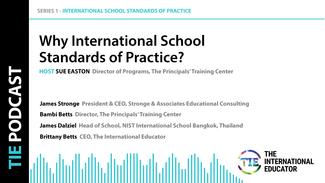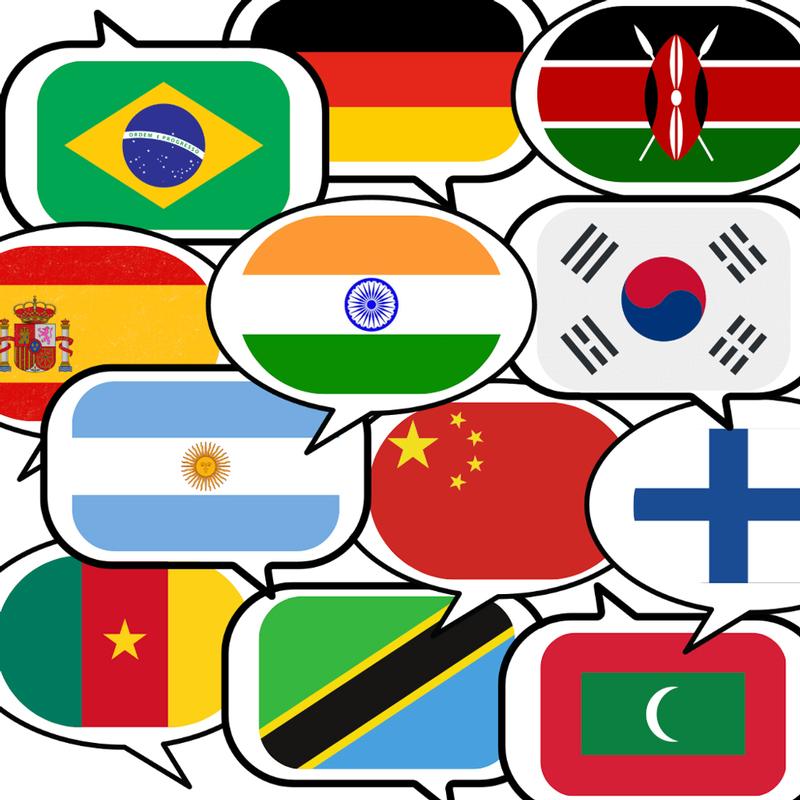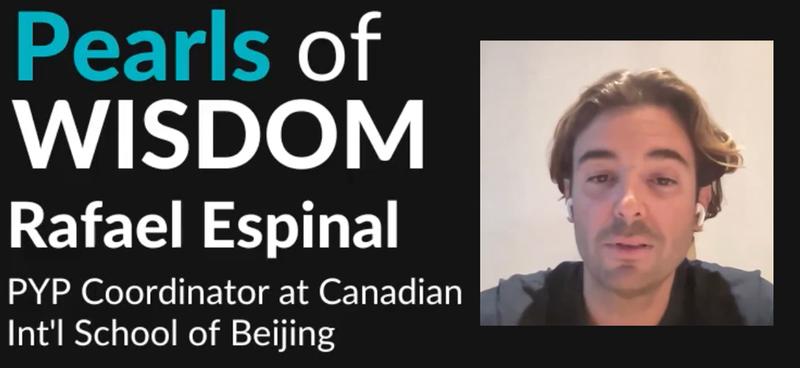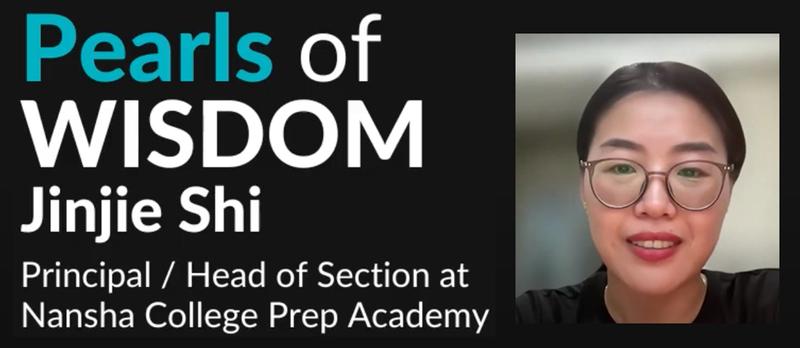
TIE PODCAST Welcome to the TIE Podcast for International Educators, your gateway to the world of international education. This podcast is by international school educators, for international school educators, and we're here to delve into topics that are not only top of mind but crucial for our community.
Our inaugural episode dives deep into a question that underpins the quality of education: "What are international school standards of practice, and why are they so vital for ensuring quality teaching and learning in international schools?" Host, Sue Easton, Director of Programs at The Principals' Training Center, engages a panel of thought leaders in a compelling conversation, where they share their thoughts and experiences on the "Why" behind international school standards.
CHECK OUT THIS EPISODE
|
|
TOP STORIES
By Cora Yang and Dalton Flanagan

|
This new reality calls on us to shift from being the sole source of knowledge to being the guides who help students master the learning process itself… more |
By Dr. Virginia Rojas

|
Exploring opportunities to make the often-repeated but inaccurate mantra that “every teacher is a language teacher” a potential reality… more |
By Andrea Celestine

|
Fairgreen’s Design Studio shows that any school can cultivate creativity and sustainability by starting with what they have and growing from there… more |
By Nick DeForest

|
With familiar challenges topping the list, this year’s survey inspired a new approach, tackling each concern through in-depth discussions... more |
|
|
DIVERSITY, EQUITY, INCLUSION, JUSTICE, AND BELONGING
By Emily MacLean

|
Leadership, at its best, isn’t a solo climb; it’s a collective elevation. Along the way, there are women who lift us up, open doors, and help us find our voice… more |
By Rae Merrigan

|
Discover why true inclusion goes beyond diversity, and how fostering belonging boosts student success, wellbeing, and school community... more |
By Elmeka Henderson

|
In the silence, your impact still speaks. Practical ways educators can uphold belonging and inclusion when DEI language is restricted or censored… more |
|
THE VOICE OF TIE
By Stacy Stephens

|
Whether you’re a teacher, leader, or aspiring administrator in international education, this episode is packed with actionable strategies to sharpen your interview skills and stand out in a competitive field... more |
By Stacy Stephens

|
In this phase, engage actively with schools, showcase your impact, assess fit with clarity, and take confident steps toward the right role... more |
By Stacy Stephens

|
If you’ve been watching from the sidelines or feeling behind, now is the time to jump in. You still have time to get aligned, get visible, and get ready before Phase Three begins in November... more |
|
|
|
INTERNATIONAL SCHOOL NEWS
By Kathryn T. Berkman

|
Eight students, one overcrowded bus, and a big idea: how empathy, systems thinking, and action created real community change... more |
By Will Warren

|
Romerike International School offered coaching to support parents, not parenting—fostering wellbeing, reflection, and community through an impactful initiative... more |
By Rachel Caldwell

|
AISB students led a mission redesign, empowered by trust, shaping a purpose-driven vision: “Think Fearlessly. Act with Kindness. Shape Tomorrow”... more |
|
|
PEDAGOGY & LEARNING
By Don Merritt

|
A consistent 15-minute block of silent, independent work transforms classrooms, building focus, equity, and stamina for authentic learning... more |
By Anthi Patrikios

|
Firewalls can’t replace empathy. When adults shift from control to connection, digital safeguarding becomes an act of prevention and trust… more |
By Anita Louise Churchville and Ceci Gomez-Galvez

|
A research-based look at why we must shift from English-only to multilingual approaches, leveraging students' linguistic assets for sustainable success... more |
|
|
|
 | THE PRINCIPALS' TRAINING CENTER |
By Andrew Dutton

|
Thoughtful reflection helps weigh the potential benefits against the inevitable ripple effects of each choice… more |
By Rafael Oscar Espinal Trejo

|
In this Pearl, Rafael shares a heartfelt reflection on the power of empathy in education and the importance of seeing each child as an individual before focusing on performance or outcomes... more |
By Craig McVicar

|
In this Pearl, Craig shares a powerful story about shifting from judgment to understanding as a leader… more |
By Jinjie Shi

|
Highlighting the paradox that while leaders are expected to support others' wellbeing, they frequently neglect their own... more |
|
|
STUDENT VOICE
Peace You Have My Word By Uma Soleyman

|
In this student poem, one small daisy sparks hope, courage, and change, reminding us that peace always starts small... more |
Empathy to Impact Podcast By Scott Jamieson

|
Meet Maria Bella, a student turned author using her voice to fight child trafficking and inspire greater student agency in learning... more |
By Noriomi Cheung

|
A personal exploration of the confusion of belonging to multiple cultures and the discomfort of never feeling fully connected to any one identity… more |
|
|
LEADERSHIP
By Dr. Kathryn Handy

|
Formal teacher leader training is valuable, but the most powerful development happens through regular, intentional Principal and middle leader interactions… more |
By Sandra Sheppard

|
When advancement teams embed themselves in school life, they amplify teacher voices, empower students, and strengthen authentic community connections… more |
By Jordan Benedict, Dr. Kristen Moreland, and Dr. Sam Olson-Wyman

|
When trust, time, and leadership align, coaching flourishes; when they’re missing, even the best intentions struggle to take root... more |
|
|
ARTIFICIAL INTELLIGENCE
By Bill Tolley

|
Ethical, purposeful AI integration empowers students as decision-makers, cultivating agency and critical thinking through inquiry-driven learning… more |
By Kelly Mekdeci

|
Explore key questions and practical frameworks to help school leaders guide ethical, collaborative faculty decisions on using Generative AI... more |
By Karen Taylor

|
Exploring the way AI may transform education if equity, ethics, and teacher training are used to enhance learning and human connection... more |
|
|
LIFESTYLE AND WELLBEING
By Mushfiqua Zabeen

|
International educators often face unseen loneliness abroad; by fostering belonging and intentional connection, schools can help teachers feel seen and supported... more |
By Mushfiqua Zabeen

|
Appreciation matters more than titles, positivity builds communities, and the resilience you grow becomes your greatest accomplishment... more |
By Bosmat Kochavi

|
As schools prioritize student wellbeing, proactively and systematically measuring it has become essential rather than optional... more |
|
|
|
